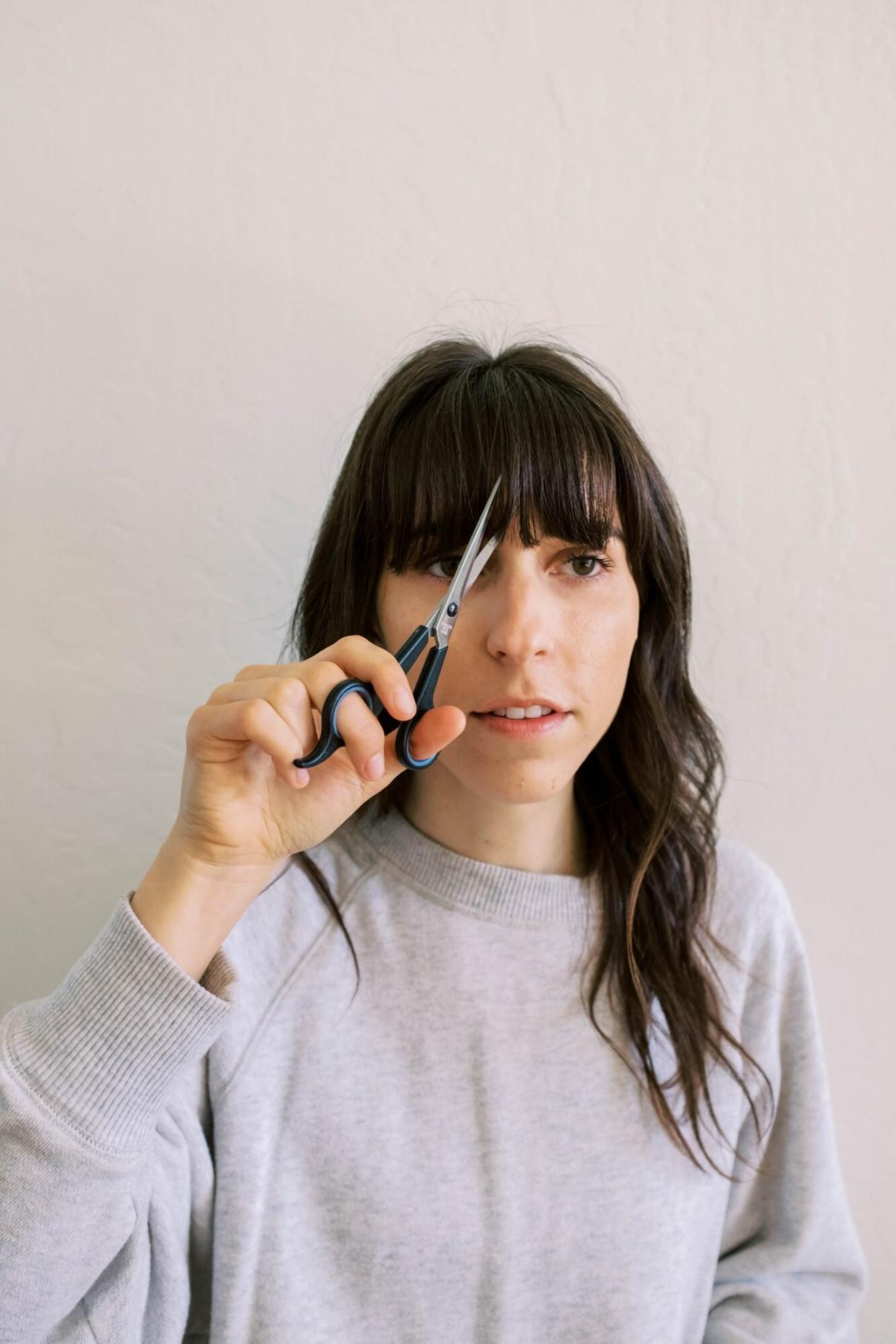Yes, You Can Cut Your Own Hair — Here's How

Daniel Kim/Stocksy
Any hairstylist will tell you that cutting your hair is best left to the professionals under normal circumstances. However, with many salons still closed in reaction to the COVID-19 pandemic, trimming your own split ends and grown-out bangs might seem like the best possible solution.
Given that we're currently in uncharted territory, cutting a very minimal amount from your ends is totally doable at home.
"People go to their hairdresser and ask for a trim, only to end up with two inches off, but that's not a trim," says Kenna, founder and owner of Brooklyn's Kennaland Hair Studio. "A trim is half an inch, or even just a centimeter, and I wouldn't recommend doing more than that if you're trimming your own hair."
Kali Ferrara, hairstylist at The Salon Project at Saks Fifth Avenue in New York City, agrees. "If you really cannot wait until you can get back into your stylists chair, err on the side of caution when snipping away," she tells InStyle. "Always cut less than you think you need in order to leave room for damage control and the chance to even out the length if one side is longer than the other.
Here, the two stylists share their tips on how to give yourself a DIY trim at home without completely messing up your haircut.
Step One: Use the Right Scissors
First things first, you'll need to find the right pair of scissors for the job, and no, the plastic ones you picked up from Ikea won't produce the best results.
Kenna suggests using a pair of steel scissors, which are more precise, although even kitchen or fabric scissors will do the trick. "I've actually used a pair of kitchen scissors on the set many times after mine went missing or got taken at the airport," Kenna says. "As long as they're sharp, they don't have a gap at the end, and are angled right, you can use them."
Step Two: Section Your Hair
You'll want to keep your hair dry with your natural parting in place, and use your ears as a guide to determine exactly how to section off your layers.
"All the hair at the front of your ears is the front of your hair, and anything behind your ears is the back of your hair," Kenna explains. "Never trim the back of your hair yourself as there are lines and corners your hairdresser has put in there to give the cut structure." The sides, on the other hand, don't have as many corners, and as long as you're comfortable with a pair of scissors, they should be easier to work with.
For bangs, Ferrara recommends cutting the hair damp so that you can see how it naturally falls, while also giving a "little bit of wiggle room for error."
VIDEO: How to Trim Your Own Bangs Without Screwing Them Up
Step Three: Trim Following the Point-Cut Method
Separate out the front sections of your hair. Start from the bottom and work your way up using the point-cutting method.
"Angle the end of your scissors as parallel as you can with your hair, and cut into the ends. It's a more forgiving way of cutting," says Kenna. "Never ever cut at a blunt angle, because you'll end up with chunky lines." Work slowly section by section until you reach the top portion, and resist the urge to try out the DIY ponytail trimming method you looked up on Pinterest. This has the potential to create too many uneven angles, and since some areas of hair won't reach the tip of the ponytail, you'll essentially be chopping at the shorter layers.
Following these tips won't end in a hair disaster, but you will make a mess, so choose the setting for your DIY haircut wisely. "Just be careful, cut small amounts slowly in sections, and be mindful of the mess," Kenna advises. "Cutting your hair makes a mess, so do it over your sink or somewhere you can clean easily, and not over your makeup bag."
This is Winging It, where we're helping you master your favorite salon treatments and looks without having to leave the house.
